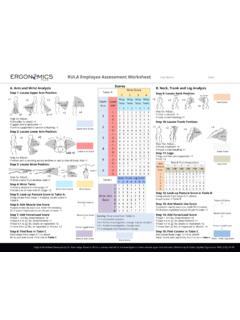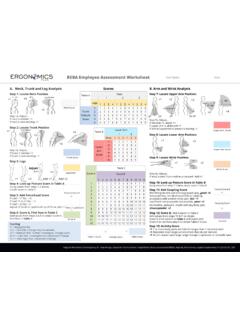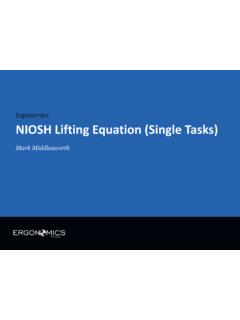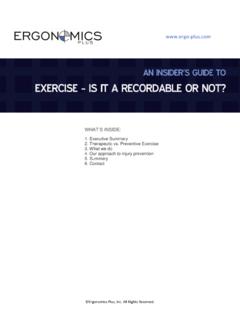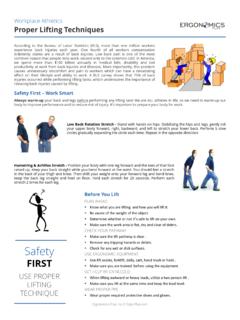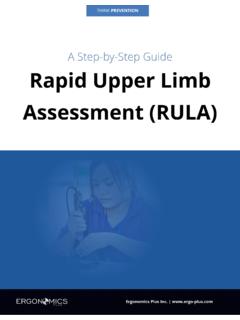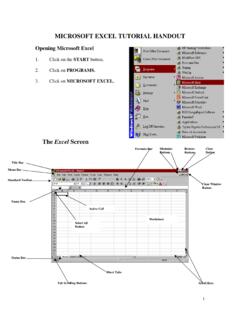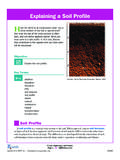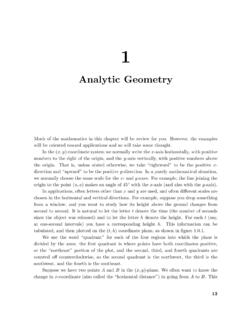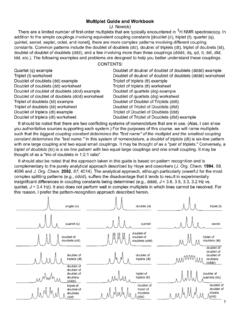Transcription of Step-by-Step Guide: NIOSH Lifting Equation (Single Task ...
1 Ergonomics Plus Inc. | THINK PREVENTION Step-by-Step Guide: NIOSH Lifting Equation (Single Task Examples) PAGE 2 | NIOSH Lifting Equation : Single Task Examples The following examples from the NIOSH Lifting Equation Applications Manual have been adapted to show the proper use of the Equation with our data collection worksheet and calculator. In addition, the examples show how this tool can be used to evaluate body mechanics recommendations and ergonomic redesign suggestions.
2 How to Use the Example Problems There are several approaches for controlling the stressors related to manual Lifting . One approach is to eliminate the manual requirements of the job by using hoists, cranes, manipulators, chutes, conveyors, or lift trucks, or through mechanization or automation. If the manual requirements of the job cannot be eliminated, then the demands of the job should be reduced through ergonomic design/redesign ( , modify the physical layout of the job or reduce the frequency or duration of Lifting ).
3 As a last resort, and if redesign is not feasible, the stress on the worker should be reduced by distributing the stress between two or more workers ( , team Lifting ). In many cases elimination of manual Lifting is not feasible or practical. Thus, ergonomic design/redesign is the best available control strategy. The goal of such a strategy is to reduce the demands of the job by reducing exposure to dangerous loading conditions and stressful body movements. Ergonomic design/redesign includes: (1) physical changes in the layout of the job, (2) reductions in the Lifting frequency rate and/or the duration of the work period, and (3) modifications of the physical properties of the object lifted, such as type, size, or weight and/or improvement of hand-to-object coupling.
4 The Lifting Equation and procedures presented in this document were designed to identify ergonomic problems, and evaluate ergonomic design/redesign solutions. By examining the value of each task multiplier, the penalties associated with each job-related risk factor can be evaluated, thereby determining their relative importance in consideration of alternate workplace designs. The task factors that cause the greatest reduction in the load constant should be considered as the first priority for job redesign.
5 Some general design/redesign suggestions outlined in the applications manual are as follows: If HM < - Bring the load closer to the worker by removing any horizontal barriers or reducing the size of the object. Lifts near the floor should be avoided; if unavoidable, the object should fit easily between the legs. PAGE 3 | NIOSH Lifting Equation : Single Task Examples If VM < - Raise/lower the origin/destination of the lift. Avoid Lifting near the floor or above the shoulders. If DM < - Reduce the vertical distance between the origin and the destination of the lift.
6 If AM < - Move the origin and destination of the lift closer together to reduce the angle of twist, or move the origin and destination further apart to force the worker to turn the feet and step, rather than twist the body. If FM < - Reduce the Lifting frequency rate, reduce the Lifting duration, or provide longer recovery periods ( , light work period). If CM < - Improve the hand-to-object coupling by providing optimal containers with handles or handhold cutouts, or improve the handholds for irregular objects.
7 If RWL at the destination is less than at the origin - Eliminate the need for significant control of the object at the destination by redesigning the job or modifying the container/object characteristics. Examples are provided to demonstrate the proper application of the Lifting Equation and procedures. The procedures provide a method for determining the level of physical stress associated with a specific set of Lifting conditions, and assist in identifying the contribution of each job-related factor.
8 The examples also provide guidance in developing an ergonomic redesign strategy. Specifically, for each example, a job description, job analysis, hazard assessment, redesign suggestion, illustration, and completed worksheet are provided. The ten examples were chosen to provide a representative sample of Lifting jobs for which the application of this Equation was suitable. The examples are organized as follows: Single Task, Performed a Few Times Per Shift 1. Loading Punch Press Stock 2.
9 Loading Supply Rolls 3. Loading Bags Into A Hopper Single Task, Performed Repetitively 4. Package Inspection 5. Dish-Washing Machine Unloading 6. Product Packaging I PAGE 4 | NIOSH Lifting Equation : Single Task Examples Example 1: Loading Punch Press Stock Job Description: A punch press operator routinely handles small parts, feeding them into a press and removing them. A cursory view of this task may overlook the fact that once per shift the operator must load a heavy reel of supply stock (illustrated at floor height) from the floor onto the machine.
10 The diameter of the reel is 30 inches, the width of the reel between the worker's hands is 12 inches, and the reel weighs 44 lbs. Significant control of the load is required at the destination of the lift due to the design of the machine. Also, the worker cannot get closer to the roll ( , between the legs) because the roll is too awkward. Job Analysis: The task variable data are measured and recorded on the Ergonomics Plus data collection worksheet as follows: PAGE 5 | NIOSH Lifting Equation : Single Task Examples Data collection worksheet .
